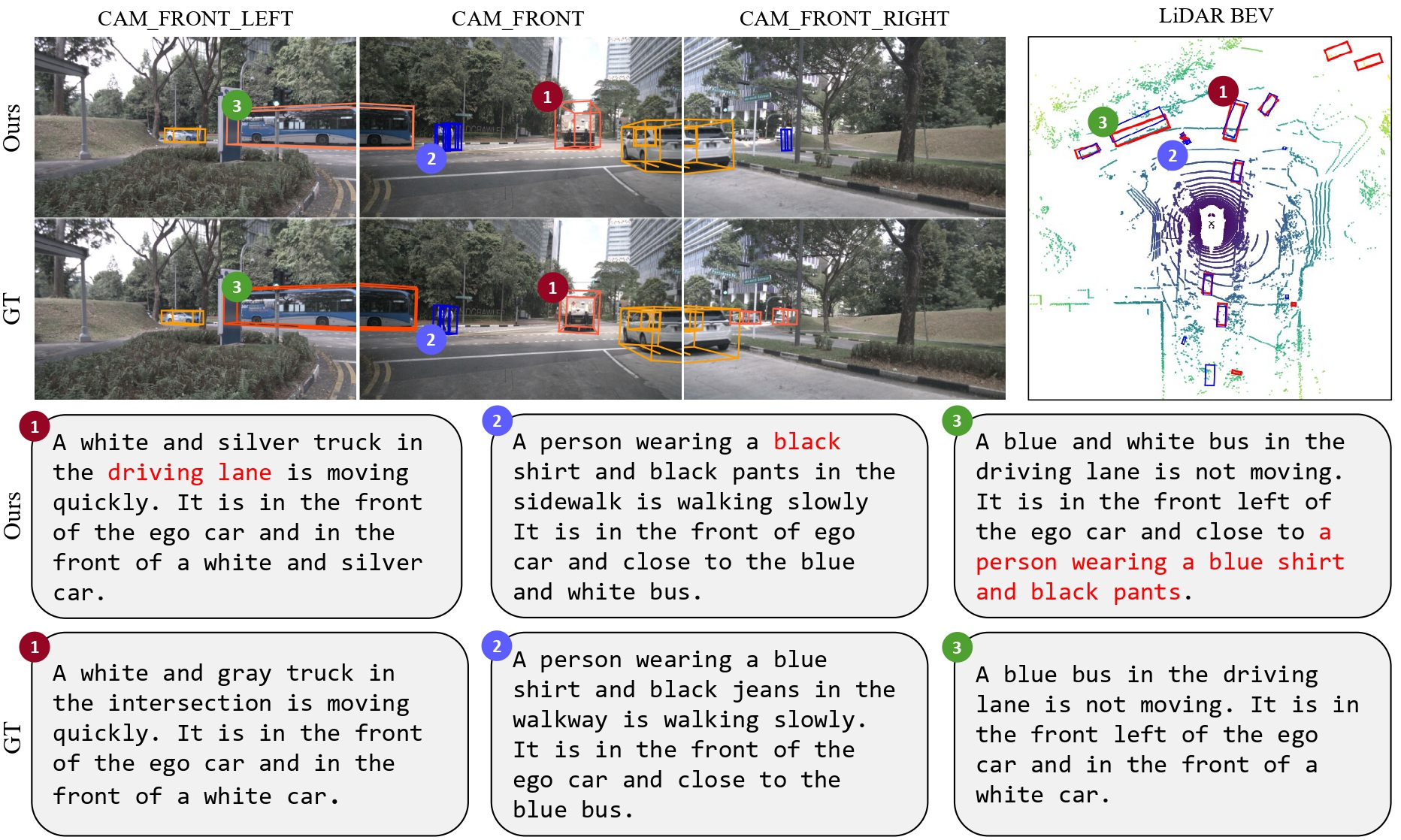This repository is the pytorch implementation of our paper, TOD3Cap.
TOD3Cap: Towards 3D Dense Captioning in Outdoor Scenes
[ECCV 2024]
Bu Jin
·
Yupeng Zheng📧
·
Pengfei Li
·
Weize Li
·
Yuhang Zheng
·
Sujie Hu
·
Xinyu Liu
·
Jinwei Zhu
·
Zhijie Yan
·
Haiyang Sun
·
Kun Zhan
·
Peng Jia
·
Xiaoxiao Long
·
Yilun Chen
·
Hao Zhao
(📧 indicates corresponding authors)
CASIA | Li Auto | AIR, Tsinghua University | Beihang University | HKUST | HKU
We introduce the new task of outdoor 3D dense captioning. As input, we assume a LiDAR point cloud and a set of RGB images captured by the panoramic camera rig. The expected output is a set of object boxes with captions. To tackle this task, we propose the TOD3Cap network, which leverages the BEV representation to generate object box proposals and integrates Relation Q-Former with LLaMA-Adapter to generate rich captions for these objects. We also introduce the TOD3Cap dataset, the largest one to our knowledge for 3D dense captioning in outdoor scenes, which contains 2.3M descriptions of 64.3K outdoor objects from 850 scenes in nuScenes.
This reposity will be updated soon, including:
- Initialization.
- Uploading the TOD3Cap Dataset.
- Uploading the Annotation Tools.
- Uploading the codes of TOD3Cap Network.
- Uploading the Installation guidelines.
- Uploading the Training and Evaluation scripts.
- Uploading the Visualization scripts of gt data and predicted results.
- Uploading the Baselines implementation.
Camera-based implementation: see tod3cap_camera/README.md.
Lidar-based and fusion-based: see tod3cap_fusion/README.md.
-
We release our best-performing checkpoints. You can download these models at [Google Drive] and place them under
checkpointsdirectory. If the directory does not exist, you can create one. -
We release the pretrained detector models we used during training in [Google Drive]. If you want to use other pretrained video-swin models, you can refer to BEVFormer and BEVFusion.
You can download the TOD3Cap dataset in Google Drive.
We provide example scripts to train our model.
cd tod3cap_fusion
. dist_train_stage2.sh
# After changing the checkpoint path to your own path
. dist_train.shWe provide example scripts to evaluate pre-trained checkpoints.
cd tod3cap_fusion
# After changing the checkpoint path to your own path
. dist_test.sh
# After changing the result path to your own path
. eval.shIf you find our work useful in your research, please consider citing:
@article{jin2024tod3cap,
title={TOD3Cap: Towards 3D Dense Captioning in Outdoor Scenes},
author={Jin, Bu and Zheng, Yupeng and Li, Pengfei and Li, Weize and Zheng, Yuhang and Hu, Sujie and Liu, Xinyu and Zhu, Jinwei and Yan, Zhijie and Sun, Haiyang and others},
journal={arXiv preprint arXiv:2403.19589},
year={2024}
}We would like to thank Dave Zhenyu Chen at Technical University of Munich for his valuable proofreading and insightful suggestions. We would also like to thank Lijun Zhou and the student volunteers at Li Auto for their efforts in building the TOD3Cap dataset. Our code is built on top of open-source GitHub repositories. We thank all the authors who made their code public, which tremendously accelerates our project progress. If you find these works helpful, please consider citing them as well.





